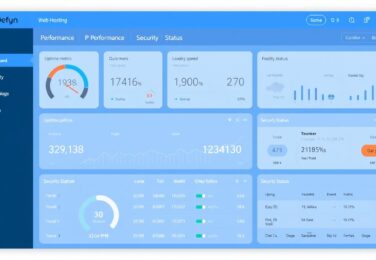Can hosting be transferred?

Table of Content
As Aussies, we know how crucial a reliable website is for our businesses and online presence. What if your current hosting isn’t up to par? Can you switch to a new host without losing your site’s content?
This article will explore the world of web hosting and why you might switch providers. We’ll cover the types of hosting services and the benefits of a change. Plus, we’ll offer tips for a smooth move to a new host, so you can grow your online presence easily.
Key Takeaways
- Understand the basics of web hosting and the various options available to Aussie businesses and individuals.
- Discover the common reasons why you might want to transfer your website to a new hosting provider.
- Learn the step-by-step process of transferring your website, from preparing for the migration to choosing a new hosting partner.
- Uncover potential challenges and solutions to ensure a successful website transfer.
- Explore the post-transfer checklist to verify your website is functioning seamlessly.
Introduction to Web Hosting
In Australia, having a strong online presence is key in today’s digital age. Web hosting is the backbone of this presence, offering the needed infrastructure and resources. We’ll look into the basics of web hosting and the various services like shared hosting and website builders. This will help you understand your options and make a smart choice when moving your website.
Understanding the Basics
Web hosting means storing your website’s files on a server, a powerful computer linked to the internet. When someone visits your site, the server sends your files to their device, letting them see your content. The quality of your hosting service affects your website’s speed, reliability, and security.
Different Types of Web Hosting Services
- Shared Hosting: This is the most common and affordable type, where your site shares server resources with others. It suits small to medium businesses and personal sites.
- WordPress Hosting: Made for WordPress sites, this hosting offers great performance, automatic updates, and better security.
- Cloud Hosting: A flexible and scalable option, cloud hosting uses many servers to spread your site’s resources. This means more reliability and quicker loading times.
- Domain Registration: You also need to register a domain name, which is the unique address people use to find your site online.
- Website Builders: For those who don’t like the technical side, website builders let you create and manage your site easily without coding skills.
Knowing the basics of web hosting helps you check your current provider and decide on a move. Keep reading as we explore why you might want to switch your web hosting soon.
Reasons to Transfer Web Hosting
At times, we might wonder if it’s the right moment to switch our website to a new host. There are good reasons to think about moving, like being unhappy with server uptime or needing better customer support or pricing plans.
One big reason to switch is if your website’s performance is unreliable. If you’ve had problems with server uptime or long outages, it’s time to look for a better web hosting option. A reliable online presence is key for businesses and individuals. Choosing a host known for uptime can really help.
Another reason to change web hosting is the customer support you get. If you’ve had trouble with tech issues or need help with your site, good support is crucial. If your current host doesn’t offer quick, helpful support, it might be time to switch.
Lastly, your website might need more from its host as it grows. If your site is getting bigger, you might need more storage or bandwidth. Moving to a pricing plan that fits your site’s needs can ensure it runs smoothly and grows well.
Think about these points and see how your current web hosting stacks up. This will help you decide if switching to a new host is best for your online presence.
Evaluating Your Current Hosting Provider
Before we look at moving your web hosting, it’s key to check your current provider closely. This check-up will show if your current hosting meets your needs or if it’s time to look at other choices like shared, WordPress, or cloud hosting.
When checking your current web hosting, think about these main points:
- Reliability of their servers – How often do their servers go down or have problems? A reliable host is crucial for a smooth online presence.
- Quality of customer support – Can you get help from their support team easily? Good support is very important.
- Suitability of your hosting plan – Does your current plan have the features and resources you need? Has your site grown beyond your current plan? Make sure your hosting fits your needs now and in the future.
| Hosting Provider | Server Reliability | Customer Support | Suitability of Plan |
|---|---|---|---|
| Provider A | ✓ | ✓ | ✓ |
| Provider B | ✓ | ✗ | ✗ |
| Provider C | ✗ | ✓ | ✓ |
By carefully checking your current web hosting, you’ll be ready to make a smart choice for your future provider. This will help with a smooth move.
“Choosing the right web hosting provider is crucial for the success of your online business. Take the time to thoroughly evaluate your options and find the best fit.”
Steps to Transfer Web Hosting
Transferring your web hosting can be easy if you know the steps. We’ll show you how to prepare your website and domain, talk to your providers, and keep your site online with little downtime.
Preparing for the Transfer
Before you start moving your web hosting, here are some key steps:
- Backup your website data: Make a full backup of your website files, databases, and important info. This helps you restore your site if needed during the transfer.
- Review your domain registration: Check that your domain name is registered and okay. If it’s not with your current host, you’ll need to sort it with your domain registrar.
- Notify your current web hosting provider: Tell your current host you’re moving. They can help with the process and make sure it goes smoothly.
- Familiarize yourself with your new web hosting provider: Learn about the features, tools, and support of your new host. This helps you get ready for a smooth move.
These steps will help you move your web hosting without trouble. Your website will stay safe and online during the change.
| Task | Importance | Difficulty Level |
|---|---|---|
| Backup website data | High | Medium |
| Review domain registration | High | Low |
| Notify current provider | High | Low |
| Familiarize with new provider | Medium | Medium |
Follow these steps for a smooth web hosting transfer. Your website will stay safe and online without trouble.

Choosing a New Hosting Provider
Finding the right web hosting provider is key for your website’s success. We’ll look at what to consider, like hosting types, prices, support, and reputation. By the end, you’ll know how to pick a hosting plan that fits your site and budget.
There are many web hosting options, including shared hosting, WordPress hosting, and cloud hosting. Each has its own benefits. It’s important to think about what your website needs and pick the best one for you.
When looking at pricing plans, find a provider with clear and fair prices. They should have plans for different budgets and needs. Make sure the plan you choose has enough storage, bandwidth, and power for your website to grow.
| Hosting Type | Suitable For | Pricing Range |
|---|---|---|
| Shared Hosting | Small to medium websites | $5 – $15 per month |
| WordPress Hosting | WordPress-based websites | $10 – $30 per month |
| Cloud Hosting | Websites with fluctuating traffic | $20 – $100 per month |
Customer support is also key. Choose a provider that offers reliable support through various channels like phone, email, and live chat. This way, you can get help quickly and keep your website running smoothly.
Lastly, check the hosting provider’s reputation and reviews. Look for positive feedback from other customers and check their uptime and reliability. This ensures your website is in good hands.
By looking at these factors and comparing providers, you can make a smart choice for your website’s future.
Migrating Your Website
Moving your website to a new host can seem tough, but it doesn’t have to be. After picking your new host, start the move. This means backing up your data, uploading files to the new server, and making sure visitors won’t notice a thing.
Backing Up Your Data
First, make a full backup of your website data. This includes files, databases, and other key info. This step might take a bit, so be patient and make sure your backup is thorough and trustworthy.
You can back up your data in several ways. Use your web hosting provider’s tools, download files manually, or go with a third-party service. Pick the method that fits your needs and keeps your data safe.
Migrating Your Website Files
After backing up, upload your files to the new web hosting server. You can do this through the hosting panel or an FTP client. Make sure to move all your files, like content, images, and scripts.
If you’re using a website builder or WordPress hosting, moving might be easier. Many providers have tools to help with this. Just follow their steps to make the move smooth.
While moving, keep your website secure. Make sure your new web hosting has strong website security to protect your site.
By taking these steps and working with your new web hosting provider, you can move your website smoothly. A successful move means a smooth change for your visitors.
Potential Challenges and Solutions
Transferring your web hosting can sometimes come with unexpected challenges. As professional web hosting experts, we know how important a smooth move is. We’ll talk about common issues and how to get past them.
Compatibility Concerns
One big challenge is making sure your website works well with the new server. This could mean problems with programming languages, database setups, or server software. To fix this, test your site on the new hosting before moving everything over. This way, you can find and fix any problems early.
Domain Name Conflicts
Another issue is domain name problems, especially when moving to a new host. This can make your site hard to find and hurt your search engine ranking. To prevent this, plan the domain transfer well. Work with your old and new hosts, and update DNS settings and records on time.
Migration Process Difficulties
Moving your site can also be tricky, with risks like data loss, downtime, or problems with transferring files and databases. To avoid these, make full backups of your site and database. Test the move in a staging area. And, work with your new host’s customer support team to fix any issues.
By tackling these challenges and using the right solutions, you can make your web hosting transfer smooth. This keeps your site’s server uptime, functionality, and web hosting performance top-notch during the move.

Post-Transfer Checklist
Congratulations on moving your web hosting! But, the work isn’t over yet. To keep your website running well, follow a detailed checklist after the transfer. We’ll help you check your website’s functionality, spot any problems, and watch its performance.
Verifying Website Functionality
First, make sure your website works as it should after the move. Check these things:
- Ensure all pages load correctly and without errors.
- Test core features like contact forms, shopping, and interactive parts.
- Check that web hosting, website builders, and website security are all working right.
- Make sure your WordPress hosting is set up correctly and plugins work.
- Ensure redirects and URL changes are done right, leading visitors smoothly to your new site.
Testing your website helps you find and fix problems early. This keeps your users happy and your online presence strong.
After checking your website works, watch how it performs on the new host.
Conclusion
In this guide, we’ve looked at how to move your web hosting and what to think about. If you want to improve your hosting plan, find better support, or check out new options, we hope this helps. It should give you the info to make a smart choice about your web hosting.
Your website’s performance and security are key. By looking at your current host and checking out trusted hosts like Defyn, you can keep your site safe, reliable, and ready for your business. If you’re having trouble with your host, feel free to contact us at hello@defyn.com.au for help.
Starting your move to a new web host? Remember, a smooth domain registration, flexible website builders, and strong security are crucial. These will help build a strong online presence that boosts your brand and connects with your audience.










